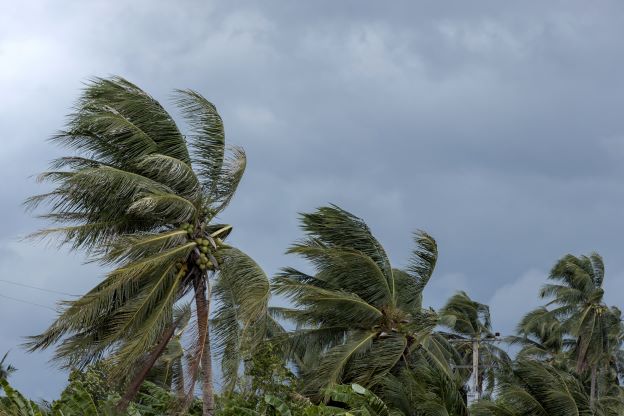Though June 1st marks the official beginning of the Atlantic Hurricane Season, the southeastern United States doesn’t typically see the height of its storm activity until further into the season (which doesn’t officially end until November 30th). As we approach the latter part of the summer season, CAMS would like to share some tips and other information to help you prepare for any storms that may come our way this year.
One of the best ways to stay up-to-date on adverse weather conditions throughout all phases of a storm is to keep a close eye on our extreme weather website. On this site, homeowners can also submit maintenance/service requests as well as find links to critical information such as forecast reports, updates on specific communities when applicable, and links to a multitude of disaster assistance resources like where to find gas, Red Cross assistance, and road closures.
Please note that you must log in to your owner portal to access specific community information or submit service requests.
CAMS is Here to Provide Trusted Guidance
Many of our team members live in coastal areas, so we have firsthand knowledge of how unsettling and inconvenient hurricanes can be. With our experience and personal knowledge of these storms, we want to set very clear expectations for our clients so that everyone is able to receive the assistance they need from our team.
Throughout hurricane season, your Community Manager will be in touch with your Board to establish pre-storm checklists to ensure your community is as prepared as possible should a storm directly impact your area.
Your Board, alongside your Community Manager, should already have a plan in place for safeguarding the common elements of your community prior to the arrival of any storms. However, please be reminded that individual homeowners are responsible for securing their homes and personal property unless prior arrangements have been made between CAMS and your association.
Making Sure Your Family is Prepared
Regardless of how close you live to the water, if you find yourself in the path of a hurricane, there are some best practices you should keep in mind while preparing your home and deciding what you and your family will do during a storm.
Storm Preparation Tips
- Keep up with weather forecasts on television, radio, the internet, and CAMS’ extreme weather site. Forecasts can change frequently, so it is imperative that you have the most up-to-date information
- Make sure your car is filled up with gas – if there is a loss of electricity for an extended period after the storm, fuel may not be readily available or may be in short supply
- If you’re riding out the storm at home, be sure to stock up on bottled water and nonperishable food items
- Make sure you have enough of your prescriptions to last at least a week
- Locate the flashlights in your home and make sure you have plenty of batteries
- Secure outdoor furniture and any other loose outdoor items that could turn into projectiles with the increased wind speeds
- Fill bathtubs with water – this can be used to flush toilets or for bathing in a pinch
If you make the choice to evacuate, please follow the posted routes along the highways and leave as early as possible – the roads will only get more congested as the storm nears the area.
When evacuating, bring along important documents and small valuables, and be sure to secure your home. If you have pets and are heading to a shelter, be sure to call ahead to find a shelter that accepts pets.
Boarding Up
When a storm is threatening your area, local supplies of plywood can often be quickly depleted. If your Board thinks that this service would be beneficial to protecting your association, it is crucial that the decision to expend the necessary funds be made prior to and independent of an impending storm.
Due to the high cost associated with purchasing and installing plywood, Boards of Directors must authorize CAMS to perform this service prior to work being started.
If your board has given the necessary approval, the boarding up of units will begin once the National Weather Service has predicted that the storm threat to your area is imminent. CAMS staff will aid in coordinating materials and labor.
When the storm has passed, CAMS will assist in the removal of boarding materials in accordance with what has been decided by the Board once it is safe to do so.
Communication Protocol
To prepare for the most active period of hurricane season, CAMS establishes a Severe Weather Team which is tasked with determining appropriate actions as they align with the phases of the storm, the path it is predicted to take, and the timeline it is expected to follow. While in some instances we may receive up to a week of advance notice before a storm, there are also times when we receive very little warning; therefore, the timelines below are estimates that may vary.
Making all the required storm preparations is time-consuming for property owners and for associations as a whole, and this is even more difficult in inclement weather. We encourage our clients to plan in advance for such events and to be proactive.
We have divided our storm communication into phases so that everyone has clear expectations of what will occur before, during, and immediately following a hurricane:
- Phase One - Storm Advisory: This phase is in effect when a named storm is predicted to be about 72 hours from impact. The Severe Weather Team will meet to discuss moving into the next appropriate phase and any actions that need to be taken.
- Phase Two – Storm Watch: When a named storm is predicted to be 48 hours from impact. During this phase, we are keeping a close eye on the path of the storm as this is when the predicted location of landfall is often narrowed down by forecasters.
- Phase Three – Storm Warning: When a named storm is ready to impact one of our regions and the threat is imminent (24-36 hours from impact). Offices in affected regions will likely begin closing during this phase.
- Phase Four – Post Storm: After a storm has passed through one of the areas we serve, we will communicate with employees and establish a post-storm protocol for all affected.
What We've Learned from Past Storms
Many of you living along the coast have a personal understanding of the difficulties hurricanes can cause, even the lower category ones. We at CAMS continue to take what we have learned through handling past storms and put it into practice to keep exceeding our clients' expectations of community association management services during natural disasters.
Creating a Jump Team
To ensure minimal service interruptions for our clients during storms, CAMS will sometimes activate a "jump team" if conditions deem such action necessary. This involves some employees who live in our coastal regions traveling to our inland regions ahead of the storm in order to be able to continue assisting clients during and immediately after storms by avoiding the phone and internet outages that will likely be affecting coastal areas.
Having team members safely out of the main path of these storms allows us to stay ahead of the storms in that we are able to keep everyone as informed as possible and begin coordinating with disaster relief professionals and handling repair issues as quickly as possible after a storm has passed.
If a storm does affect your area in the coming months, please remain safe, keep a close eye on our extreme weather website and remember, “an ounce of prevention is worth a pound of cure”.


